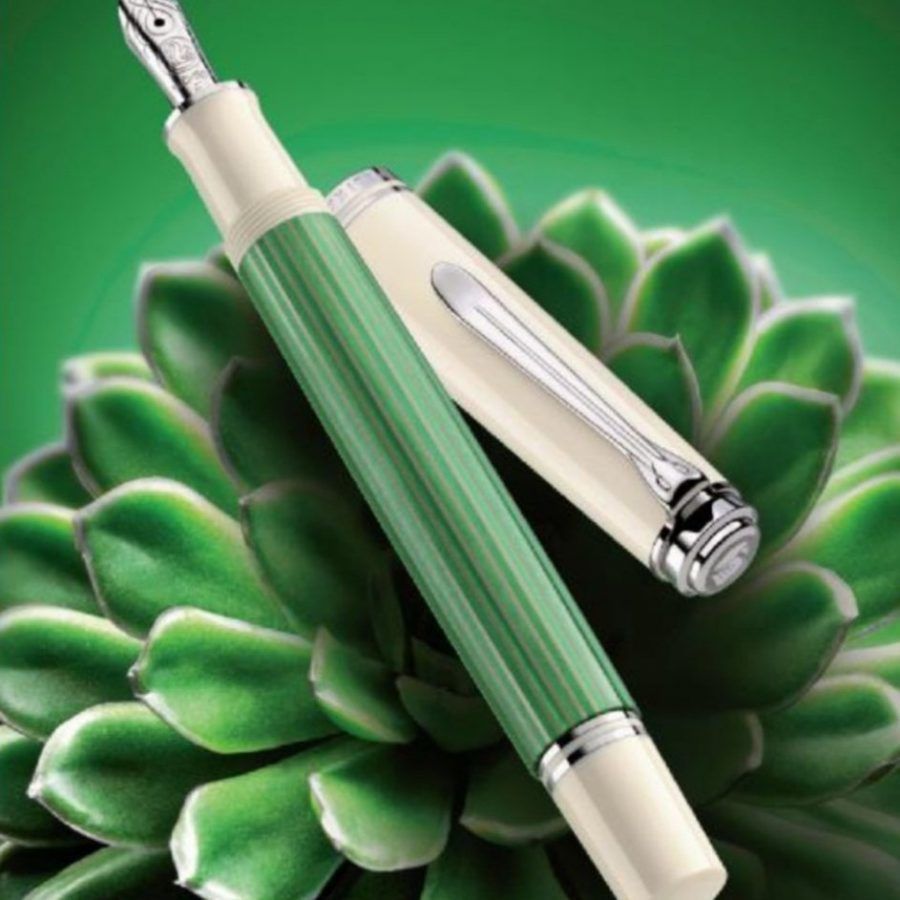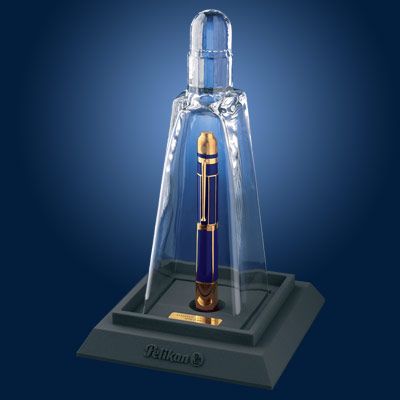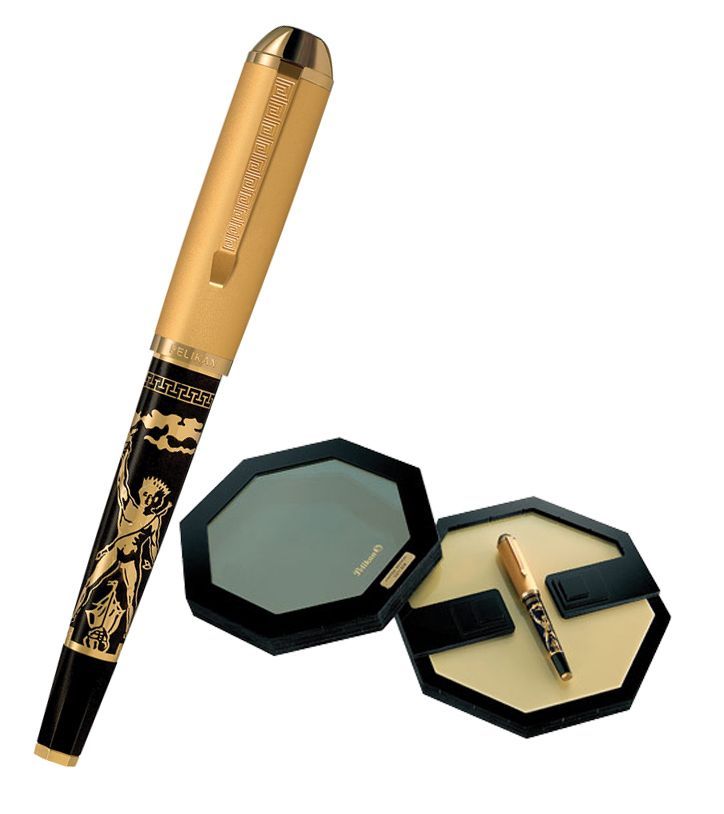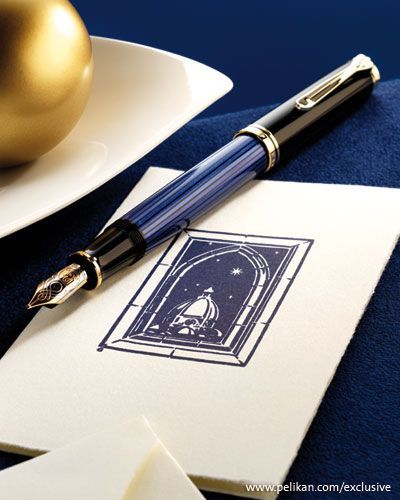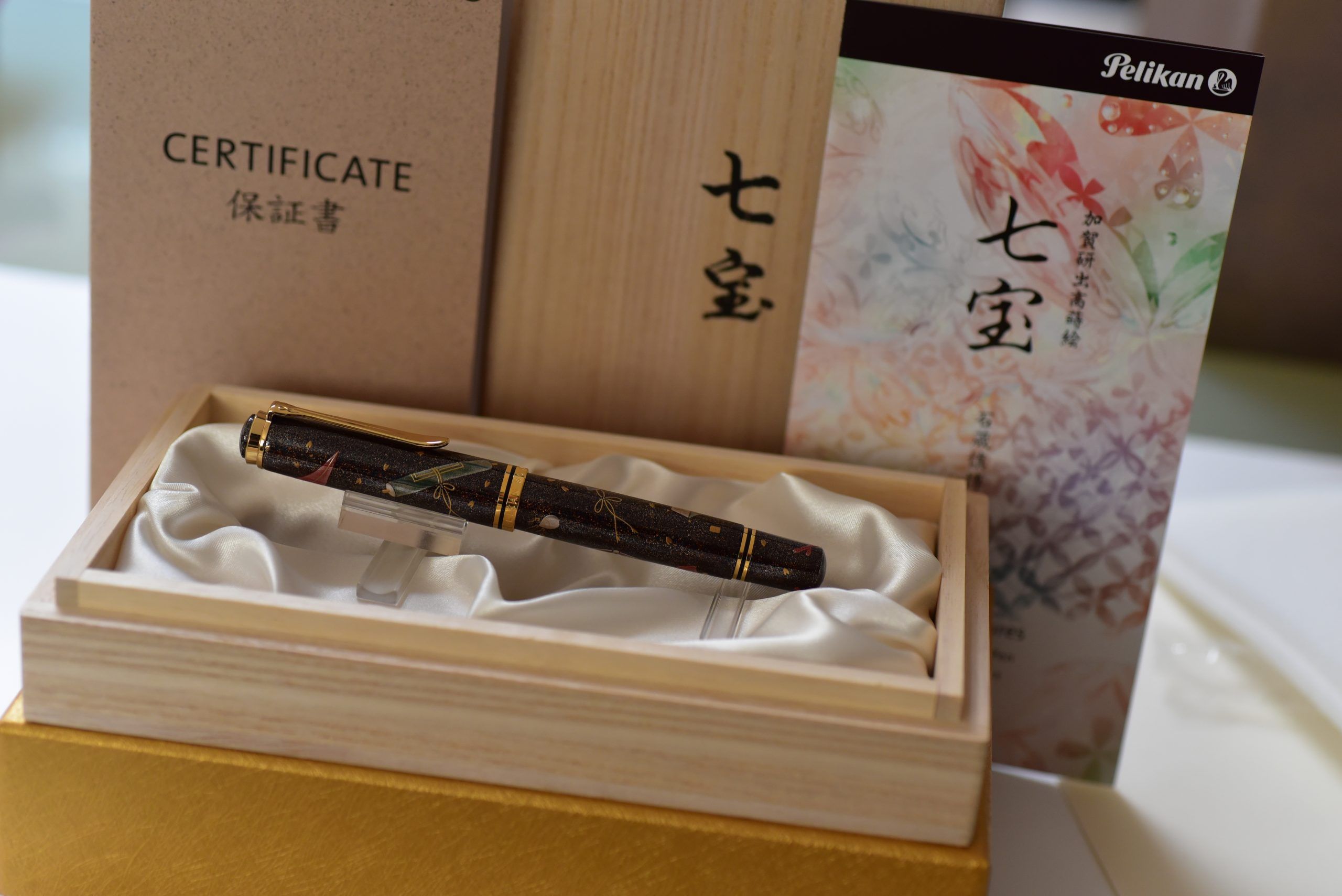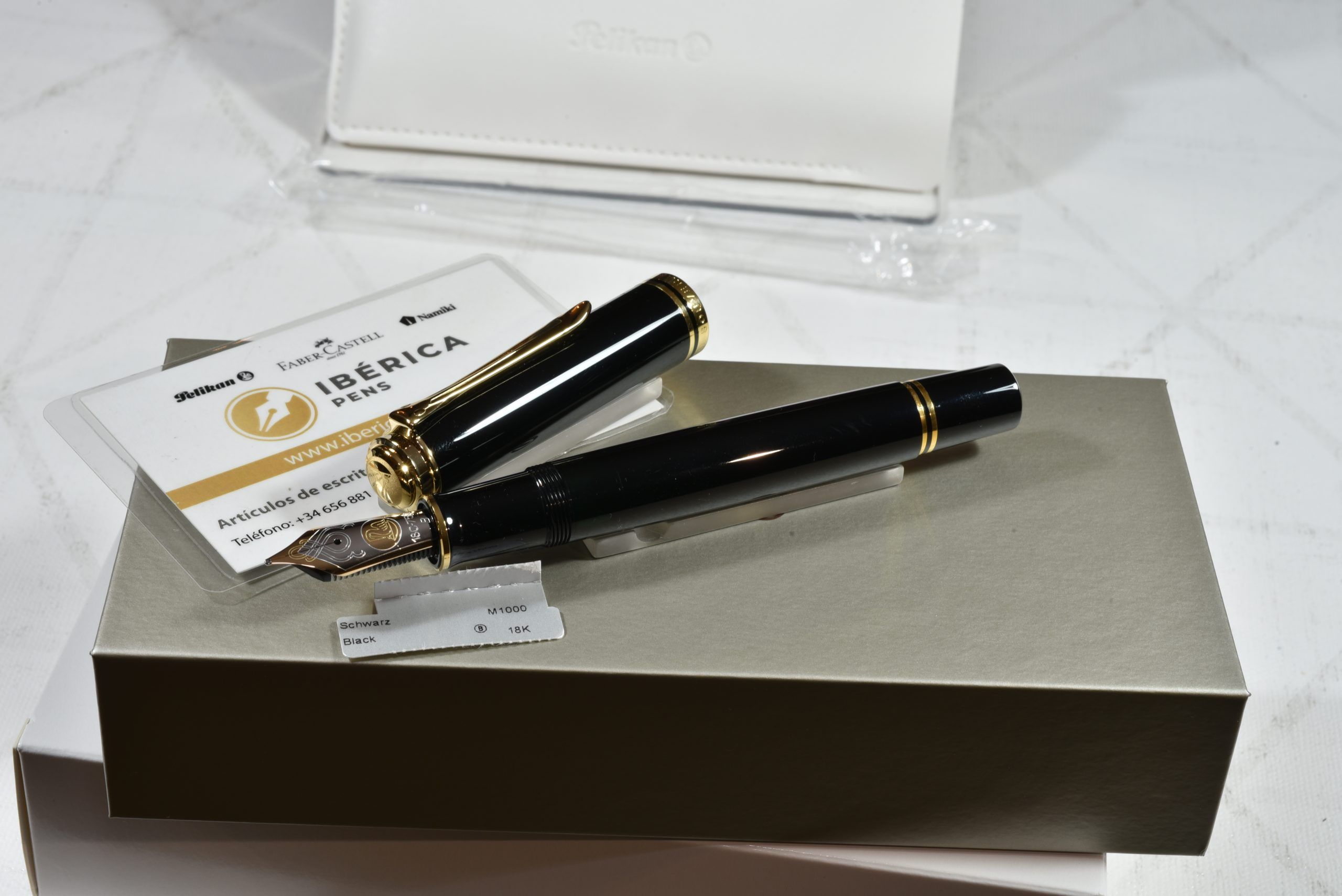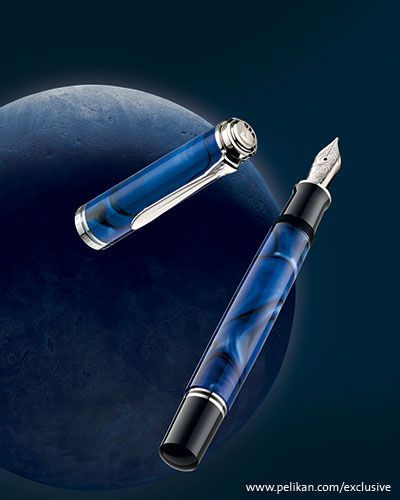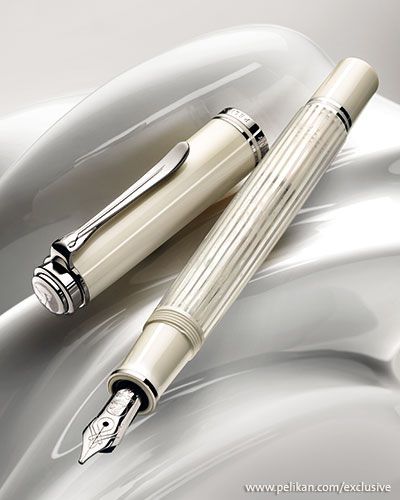Pelikan
Showing 33–48 of 59 resultsSorted by latest
-
![]()
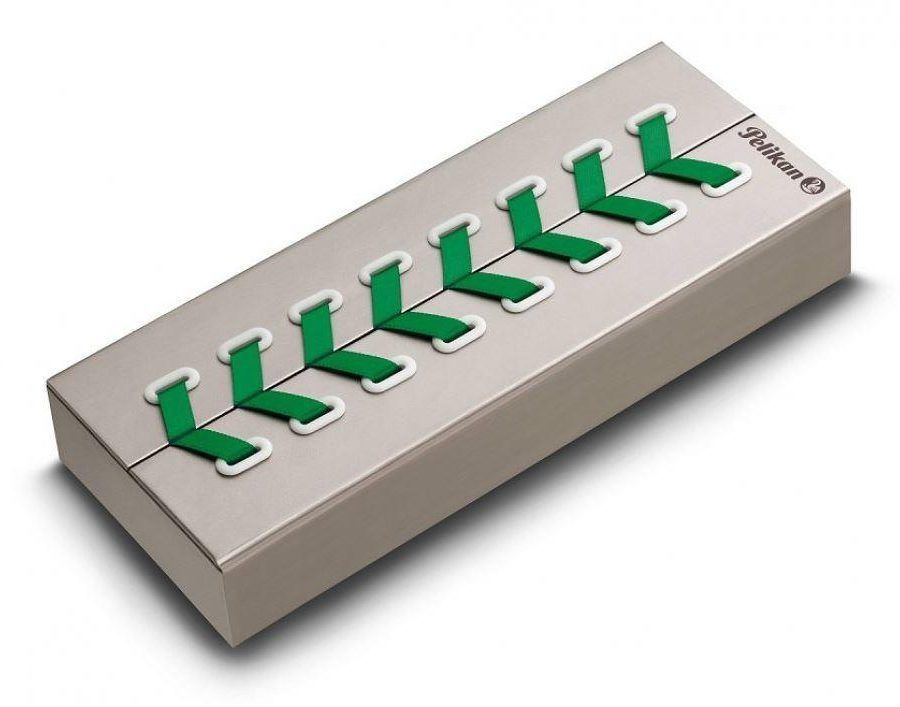 This product has multiple variants. The options may be chosen on the product page
This product has multiple variants. The options may be chosen on the product pagePelikan M605 Green White Special Edition Fountain Pen
410,00€Pelikan M605 Green White Special Edition Fountain Pen
nib size F,M. -
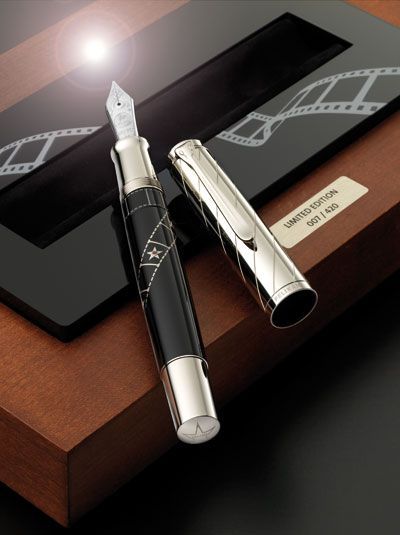
Pelikan Silver Screen L.E. Year 2009 Fountain pen
1.700,00€Like “Modern Times”, “Casablanca” or “Gone with the Wind”, the Pelikan Silver Screen Limited Edition is a classic icon, made for eternity. A ring of genuine celluloid in the shape of a filmstrip encircles the shaft and four red rubies pinpoint the center of each artfully incorporated palladium-plated star. These elements combine to commemorate the epic moments of Hollywood cinematics. Classic black along with sterling silver enhancements provides a timeless elegance. Strictly limited: the serial number of each Limited Edition Silver Screen fountain pen is engraved and marked on the filling handle.
Available nib width: M
The “Silver Screen” fountain pen has been released in the year 2009 and is limited to 420 pieces. -
![]()
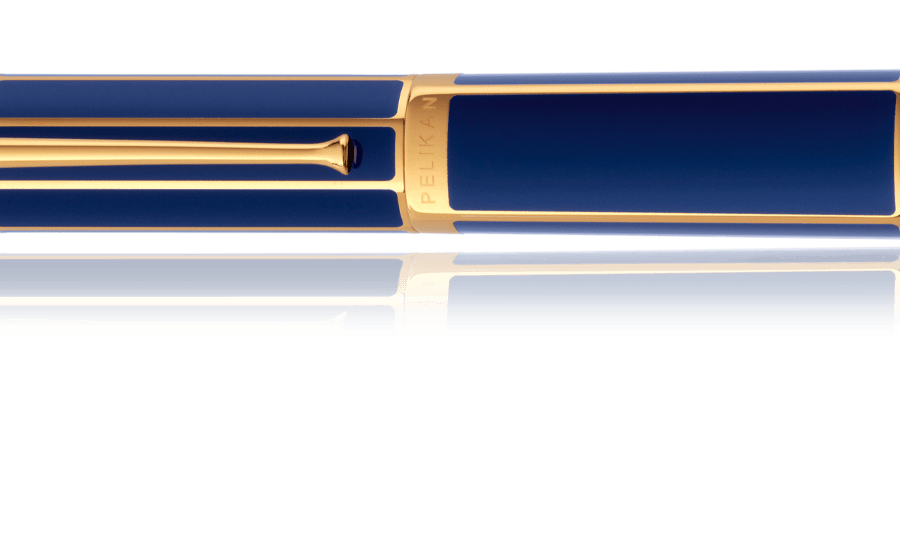
Pelikan The Lighthouse of Alexandria Fountain Pen
3.500,00€About this edition.
The series is limited to 440 pens, an allusion to the height of this unparalleled structure: the Pharos of Alexandria was 440 ft. high and took over 20 years to build. It was considered an architectural masterpiece and right down to today remains the tallest beacon ever built in the world.
The “Lighthouse of Alexandria” fountain pen has been released in the year 2007 and is limited to 440 pieces. -
![]()
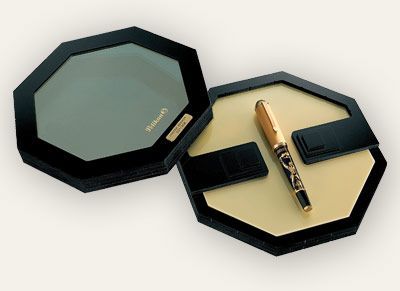
Pelikan The Colossus of Rhodes Fountain Pen
3.500,00€Colossus of Rhodes
A gift to eternity
Pelikan’s “Colossus of Rhodes” fountain pen honours a technical and artistic masterpiece that is unique in terms of size and grandeur. The bronze statue of the Greek God Helios, the worshipped sun God and patron saint of the Aegean island of Rhodes, was worked with exceptional architectonic and artistic skill.
Only specially selected materials were used, such as marble for the pedestal, iron for the inner frame and bronze, partially refined with gold, for the outer skin.
The Pelikan fountain pen, which like its historical paragon, is partly made from bronze, combines traditional craftsmanship with the highest degree of design and technical expertise. The valuable writing instrument is pre-sented in an artistically designed case that has a feeling for the stylized harbour of Rhodes where the statue is said to have once stood. -

Pelikan Fire limited edition to 500 pieces Fountain Pen
1.800,00€Fire
The third fountain pen in the series “Achievements of Civilisation” celebrates the art of taming fire. The two previous models were “Evolution of Script” (2007) and “Calculation of Times” (2008).The Limited Edition Fire is delivered in an elegant red gift box with a matching booklet that gives a delightful account of the theme and the intricate details of the fountain pen.
The “Fire” fountain pen has been released in the year 2010 and is limited to 500 pieces.
-
![]()
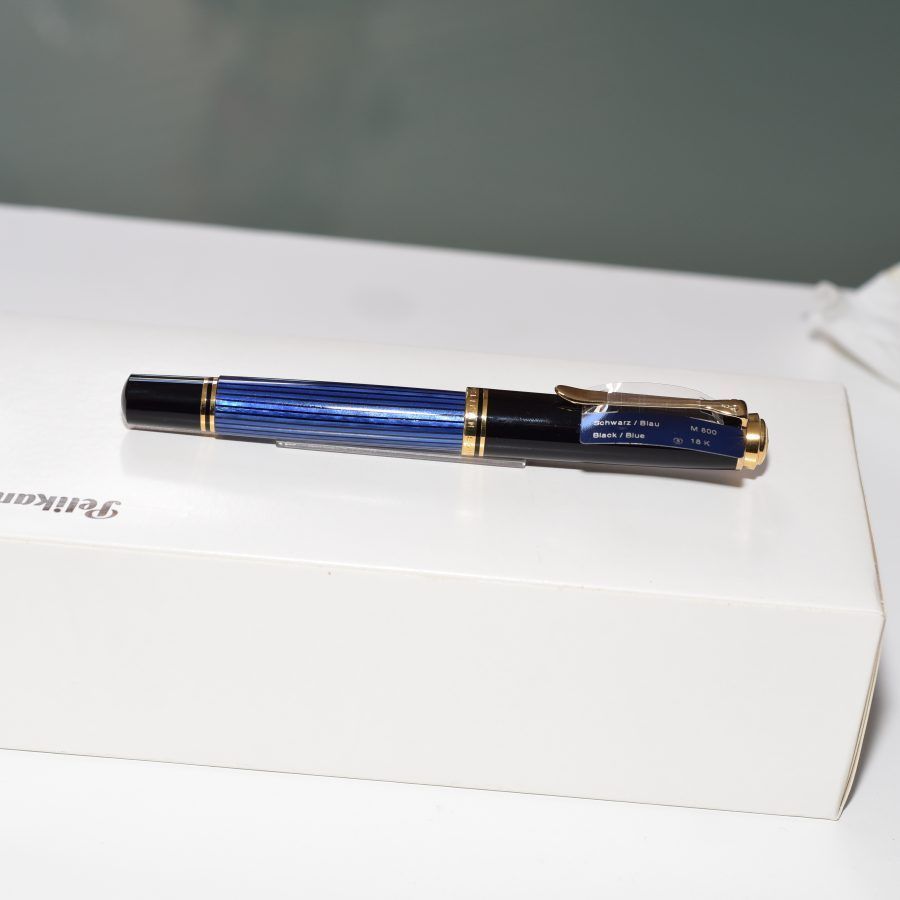 This product has multiple variants. The options may be chosen on the product page
This product has multiple variants. The options may be chosen on the product pagePelikan M800 Souverän Fountain pen Blue-Black
A true classic
In 1929 Pelikan was the first company in the world to introduce the differential piston mechanism. This technique makes the shaft inside the fountain pen rotate faster than the tip or filling sleeve, thanks to two differential threads. To this day, this fountain pen is available in many different versions, and although its design and technical details have improved over time, the basic mechanism remains the same.
In 1950 the model 400 was launched. With its green striped body, it has become the global symbol of the Pelikan brand. During the 80s, the series was baptized with the name Souverän, although popularly it has also been called “Stresemann” because it was reminiscent of the secretary of state of the “Weimar Republic”, famous for his striped suits … Souverän with black and blue striped vitola were added to the product range in 1995.
Making the vitola is a painstaking task, as the cotton material – its formula was developed especially for Pelikan – must undergo many manufacturing processes to create this piece of striped material. It is bent and smooth, and its contours are diamond cut. The characteristic double rings on the back of the body and lid are then integrated into the material. This is done with the utmost precision to obtain a virtually seamless transition between materials. The instrument is then polished to a high shine before mounting the clip with a light spring and the famous stylized pelican shape.
If you like the classics, you will own a Souverän writing instrument
Fountain pen
The illustration above shows the size comparison between one part and another. Please refer to the table below for actual sizes.
Model Size / length in cm with cap closed Size / length in cm with cap on end Weight in grams without ink
M 800 14.1 16.4 29.3
M 600 13.3 15.4 18.0
M 400 12.5 14.6 15.3 -
![]()
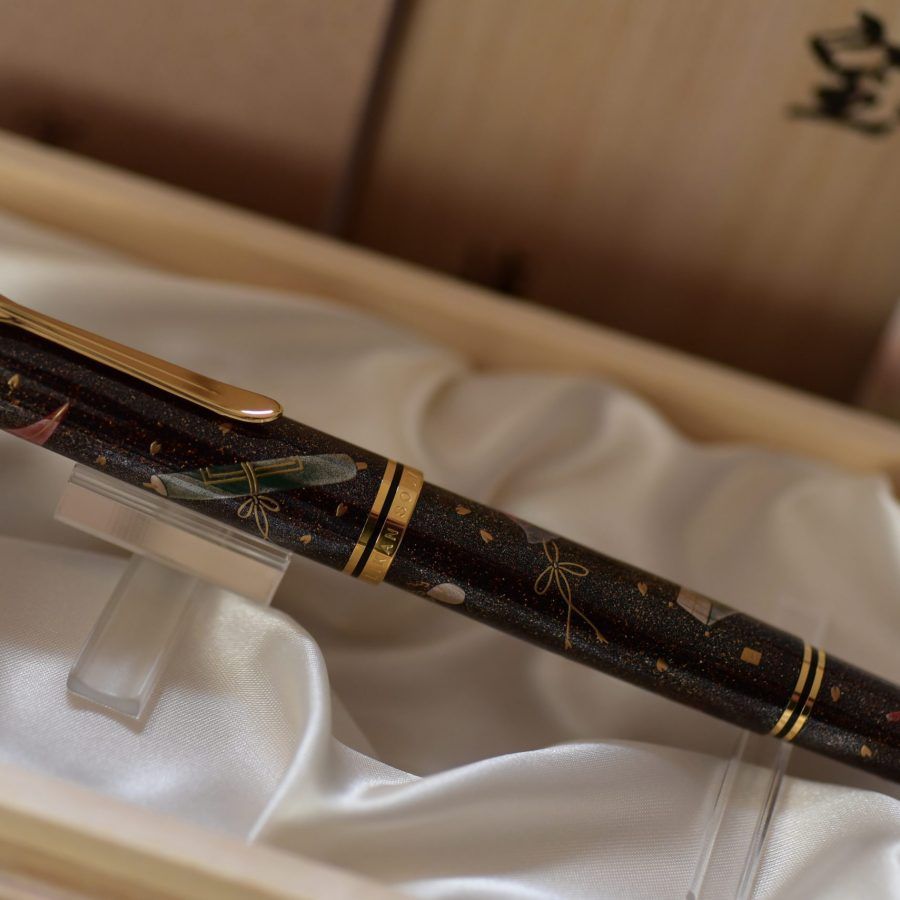
PELIKAN MAKI-E FOUNTAIN PEN SEVEN TREASURES
3.900,00€LIMITED EDITION Maki-e Seven Treasures
Maki-e is the art of Japanese lacquer painting and is renowned for its beauty and artistry. The Pelikan Maki-e ”Seven Treasures“ fountain pen uses Togidashi-Taka-Maki-e that combines both Taka-Maki-e and Togidashi-Maki-e techniques.
Seven Treasures are listed in the Buddhist scriptures. The typical seven treasures are gold, silver, lapis lazuli, crystal, giant clam, coral, and agate.
The Seven Treasures are expressed on this Pelikan M1000
as auspicious omen motifs by drawing additional fortunate items such as treasure roll, treasure-house lock, and cherry blossoms. By this, the Pelikan Maki-e ”Seven Treasures“ fountain pen is a collection of symbols which are believed to bring good fortune and are often used for Japanese traditional designs. -
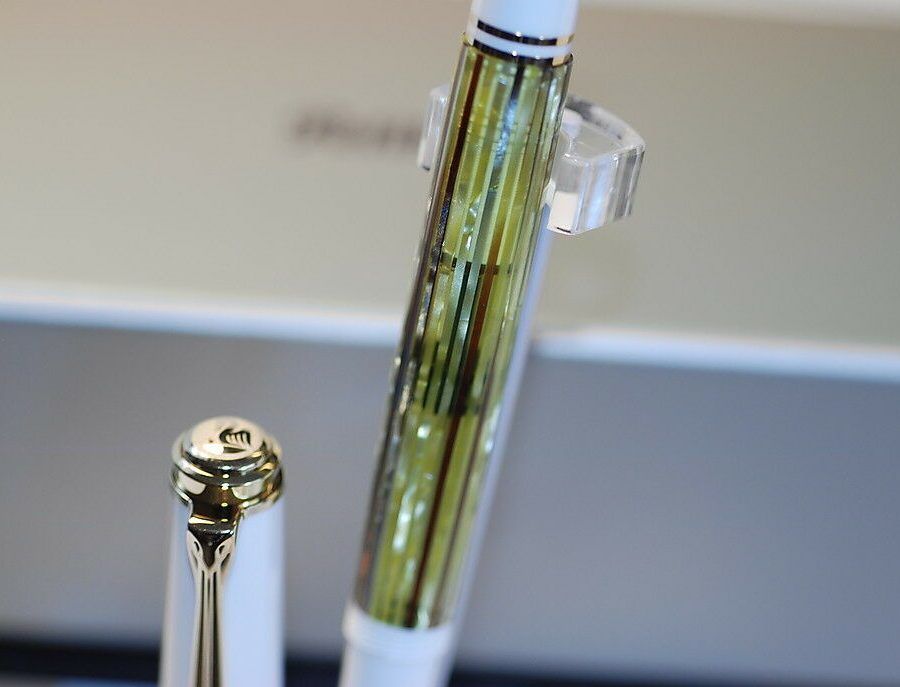 This product has multiple variants. The options may be chosen on the product page
This product has multiple variants. The options may be chosen on the product pagePelikan Special Edition souveran m 400 tortoise White Gold Fountain pen
In the year 1929 Pelikan was the first company in the world to introduce the mechanism of differential piston. This technique makes the shaft located inside the pen turn faster than the tip or sleeve of filled, thanks to two differential threads. Until today, this pen is available in many different versions, and although with the passage of time has been improved its design and technical details, the basic mechanism remains the same.
The model 400 was launched in 1950. With its Green striped body, it has become the worldwide symbol of the Pelikan brand. During the 1980s, the series was named Souverän, though popularly also called him “Stresemann” because it reminded the Secretary of State of the “Weimar Republic”, famous for its clothing striped…
The Souverän Pen shell of tortuga-blanco was manufactured in 2004, following the boom of the 1950s model lines, with a container of ink on Brown/transparent tortoise shell. Its transparent, striped vitola, possesses the delicate luster of gold. The CAP and the rest of the body parts are still white and give this model its pleasant and typically bright splendour.
The manufacture of the model is a painstaking task, since the material of cotton – its formula was specially developed for Pelikan – must undergo many manufacturing processes to create this piece of material with stripes. It bends and smooth, their contours are cut with diamond. Then the characteristic double rings that are in the back of the body and the lid are integrated into the material. This is done with the utmost precision to obtain a practically perfect transition between the materials. The instrument is then polished to a gloss before attaching the clip with a light spring and the famous form of stylised Pelikan. -
![]()
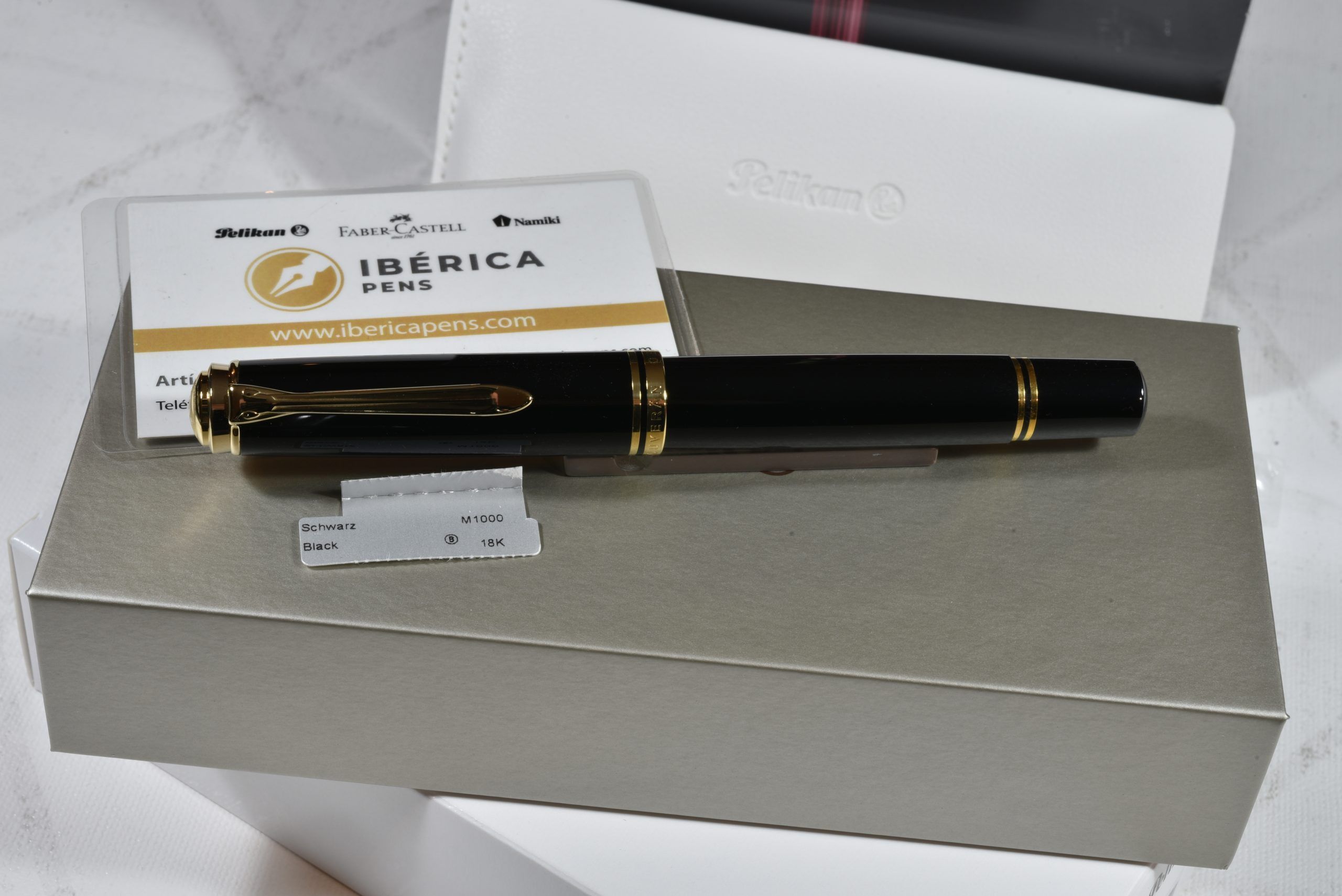 This product has multiple variants. The options may be chosen on the product page
This product has multiple variants. The options may be chosen on the product pagePELIKAN SOUVERAN M1000 FOUNTAIN PEN BLACK
525,00€ – 550,00€The barrel is made of entirely black high-grade resin. The view window of the ink container that is set off in a shade of transparent green as well as its gold plating give this fountain pen an individual character and the nostalgic aura of an original classic pen.
-
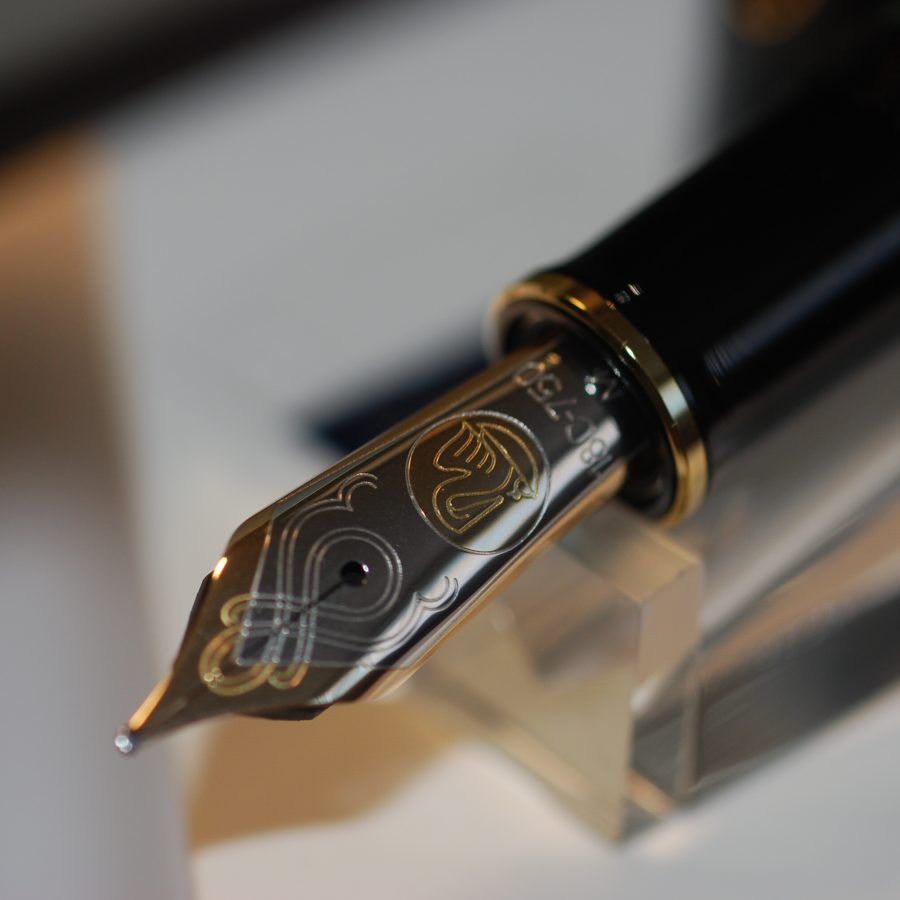 This product has multiple variants. The options may be chosen on the product page
This product has multiple variants. The options may be chosen on the product pagePelikan Souveran M1000 Fountain Pen Black Green
598,00€Piston filler including a 24 carat gold plating and an elaborately striped body made of celluloid acetate. The nibs of the Souverän piston filler M1000 and M800 are made of 18 carat/750 gold, the nibs of the models M600, M400 and M300 consist of 14 carat/585 gold. All nibs are refined with a rhodium decor and their writing qualities were tested by hand. The fountain pens are equipped with a differential piston-filling mechanism, of which is elaborated with high-value brazen components on the models M1000 and M800.
-
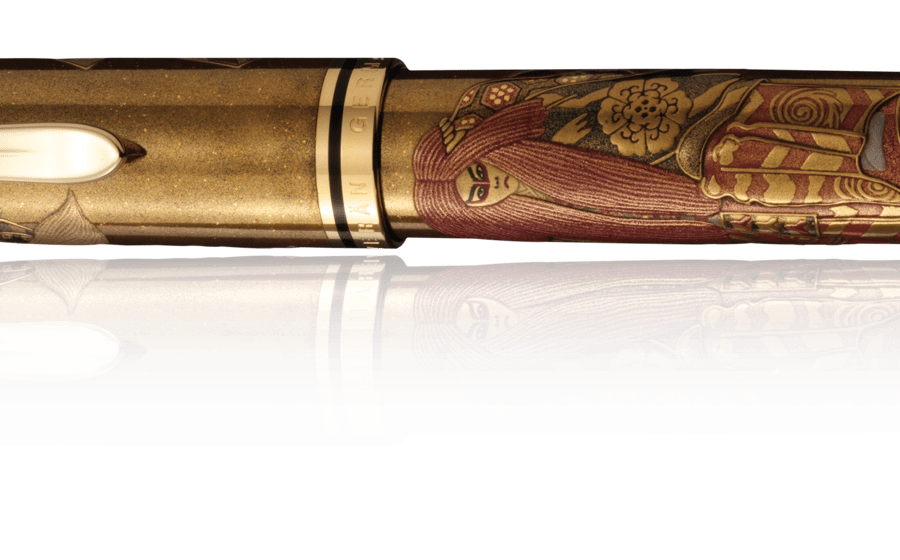
Fountain Pen Pelikan Maki-e Renjishi
5.800,00€Renjishi
Kabuki is a traditional Japanese form of theatre. Its origin is said to be from a series of performances by Izumono Okuni in Kitano Tenmangu in 1603 (the beginning of the Edo era). These performances became very popular in Kyoto, and for the last four hundred years have been established as a point of Japanese pride for traditional art. More recently, Kabuki has become popular abroad as well.
The tale of Renjishi was written by Mokuami Kawatake based upon the moral story in which a parent pushes his children down into the bottomless valley with the intention of raising only those who are able to run back up from the valley. This story is regarded as the representative piece of Kabuki dancing, and truly touches the audience’s heart as it is performed by a real parent and son.
The climax of this performance is painted on the Pelikan fountain pen “Renjishi”, where the white-haired parent and the red-haired child dance together wildly as a perfect match. -
![]()
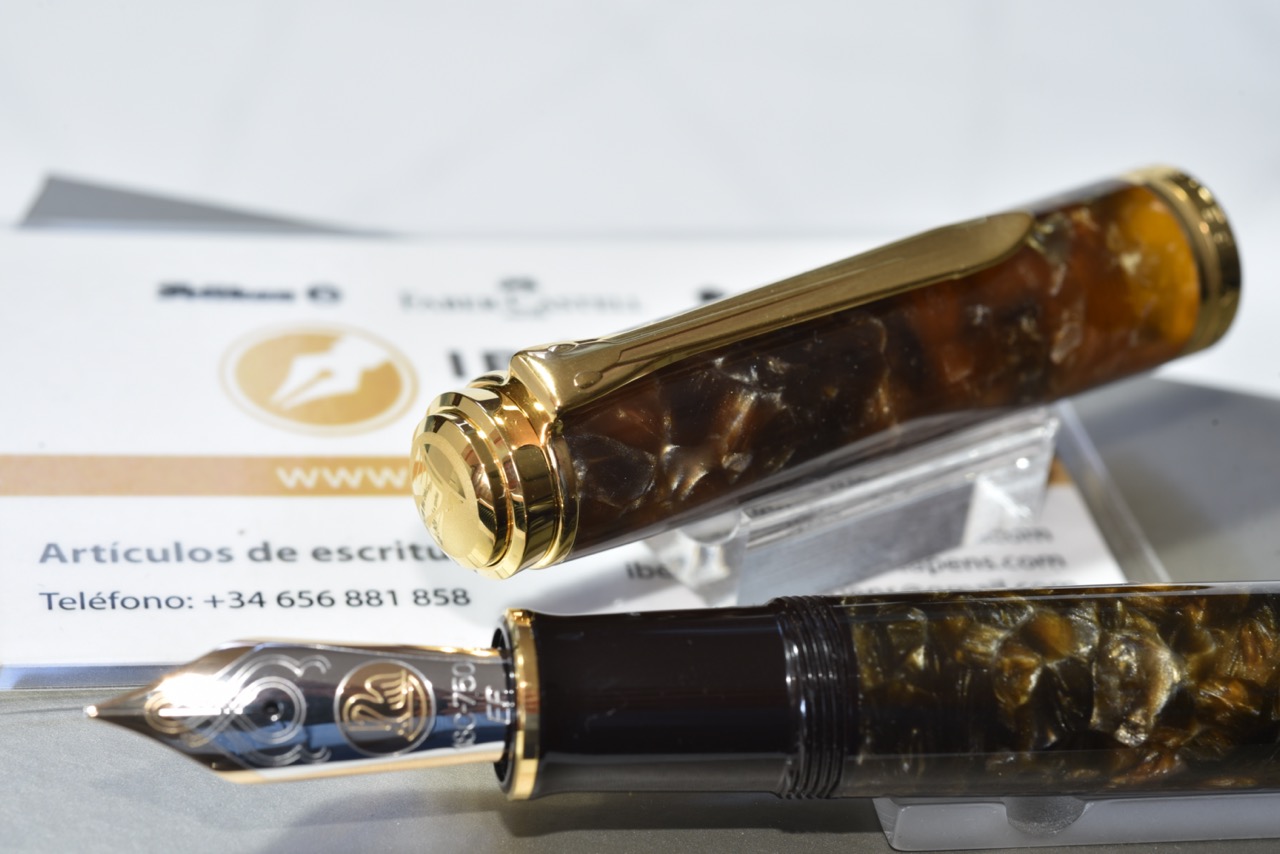
Pelikan Souveran M1000 Renaissance Brown Fountain Pen Special Edition
720,00€The rings and clip are elegantly decorated with 24-carat gold. The two-tone, 18-carat gold nib is optionally available in nib sizes EF, F, M and B. A ballpoint pen to match this beautiful fountain pen is also featured in our range.
-
![]()
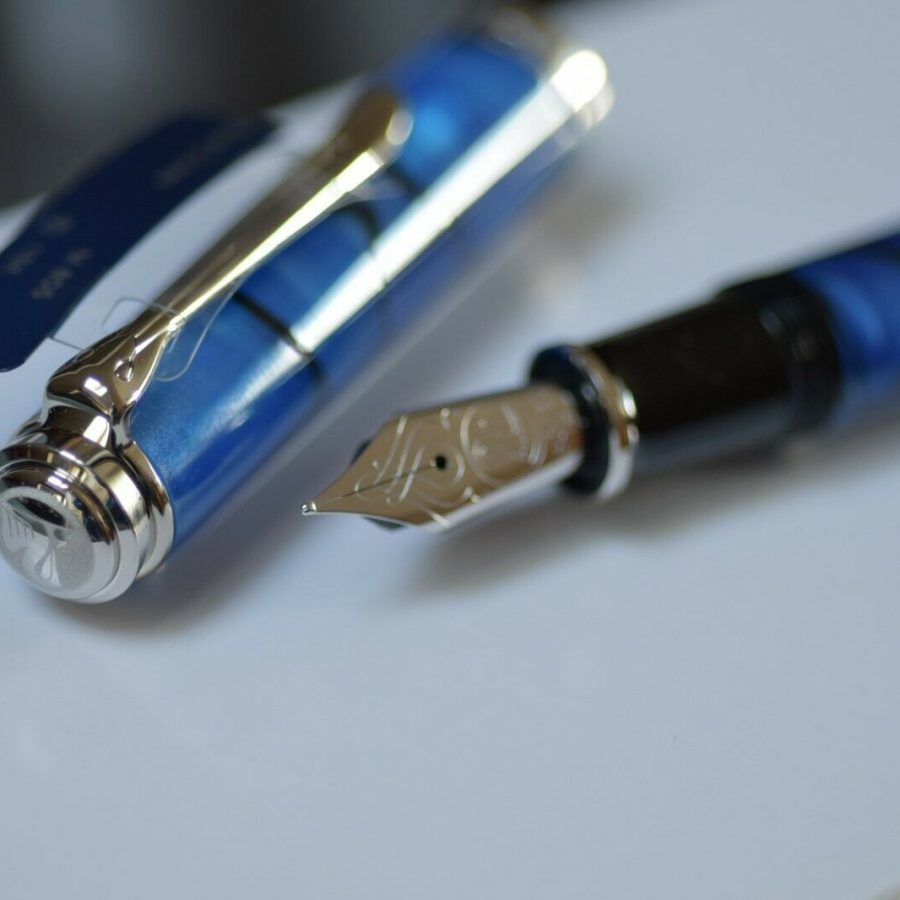 This product has multiple variants. The options may be chosen on the product page
This product has multiple variants. The options may be chosen on the product pagePelikan Souveran 805 Blue Dunes Fountain Pen
Original price was: 525,00€.450,00€Current price is: 450,00€.The composition of flowing silhouettes displays distinct patches of color, yet it also harmoniously unites the varying shades of blue. Like the color of sand dunes under a midnight moon, the interplay of blues in each 805 Blue Dunes writing instrument is unique.
-
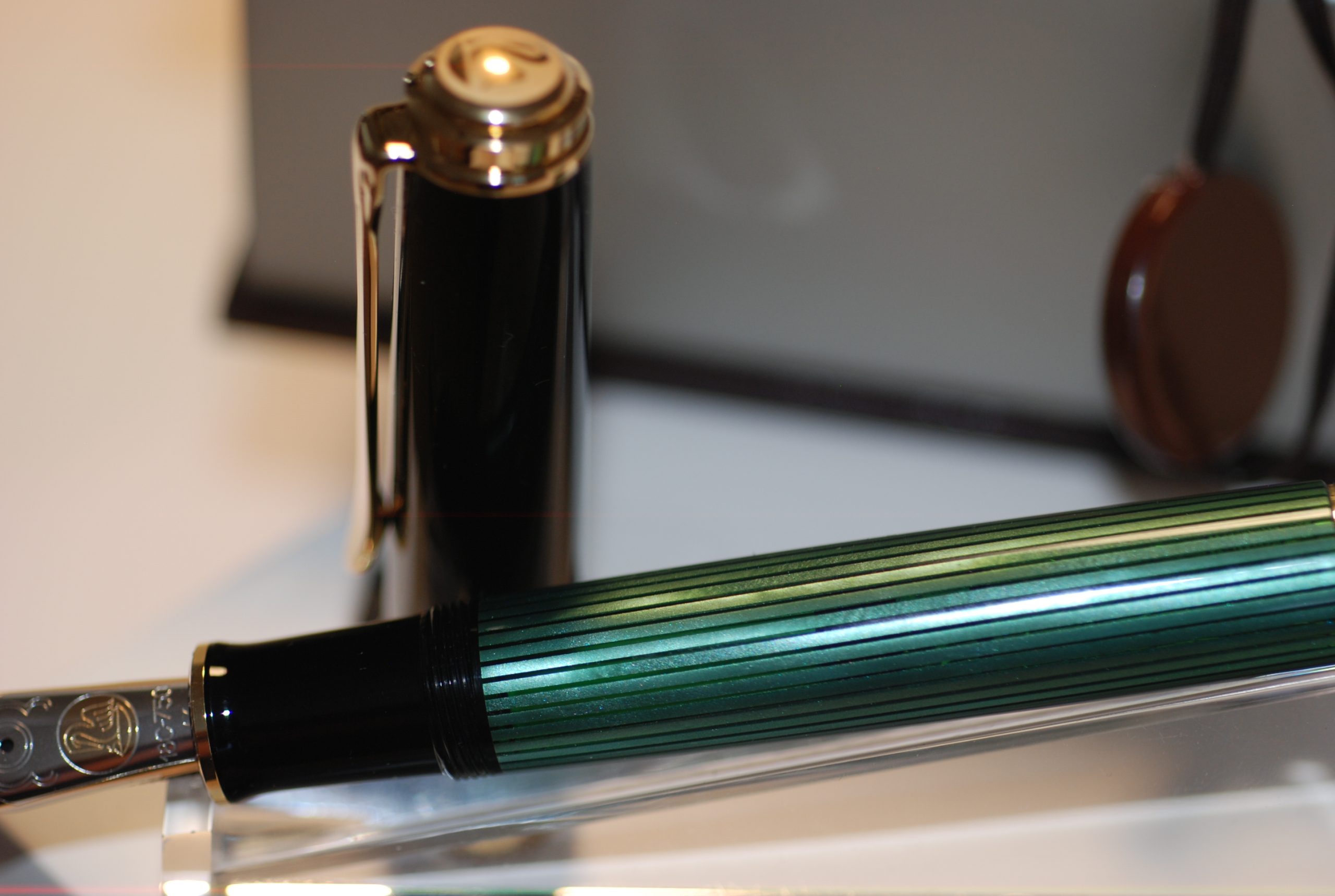 This product has multiple variants. The options may be chosen on the product page
This product has multiple variants. The options may be chosen on the product pagePelikan Souveran 800 negro verde Fountain Pen
475,00€ – 600,00€NIB SIZE F-M-B
CELLULOID BODY AND CAP
POCKET CHARGING SYSTEM
SPECIAL CASE WITH PELIKAN INKER
NEW -
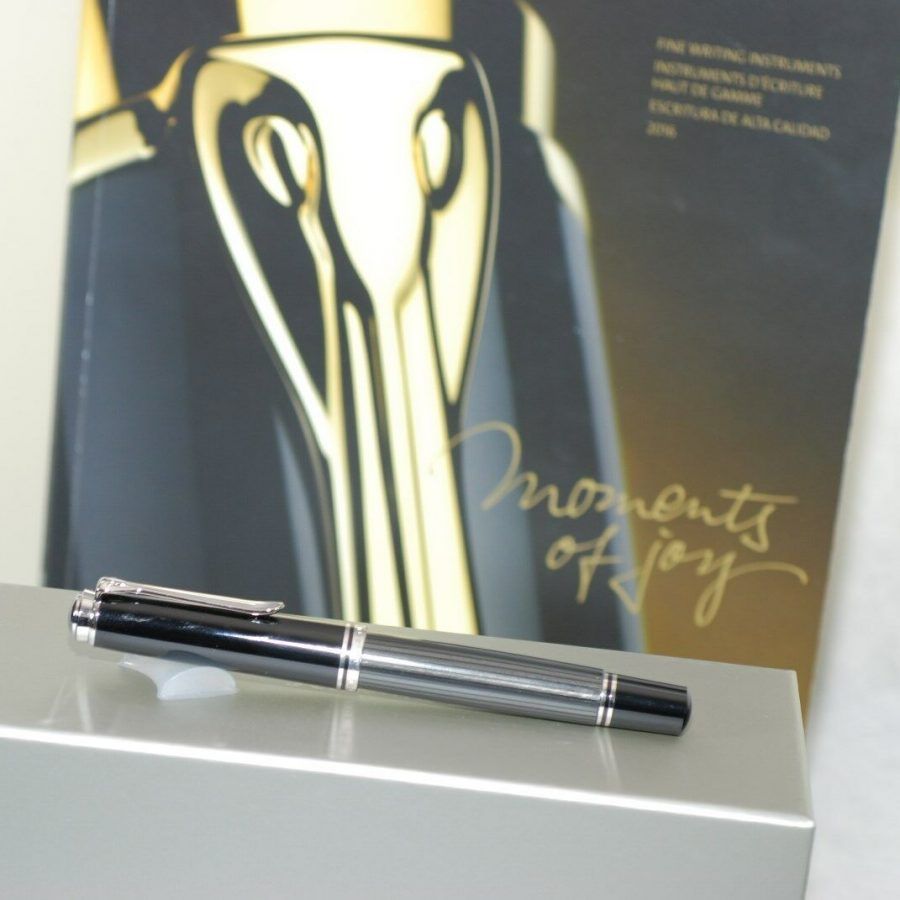 This product has multiple variants. The options may be chosen on the product page
This product has multiple variants. The options may be chosen on the product pagePelikan Stresemann M 805 Souveran Fountain Pen
Original price was: 635,00€.475,00€Current price is: 475,00€.PELIKAN SOUVERÄN STRESEMANN M805
The barrel with the deceptively simple anthracite stripes is made of cellulose acetate, using a traditional process that‘s extremely work-intensive. For the black, finely turned pieces, high-quality resin was used. The clip and the rings are plated with palladium. The gold nib is completely rhodinized to obtain a silver sheen. Every single writing instrument is mounted by hand and carefully checked to fulfill the strictest quality criteria. This elegant series is available in the sizes 405 and 805 as fountain pen, ballpoint pen or rollerball and in the size 605 as fountain pen and ballpoint pen.
-
![]()
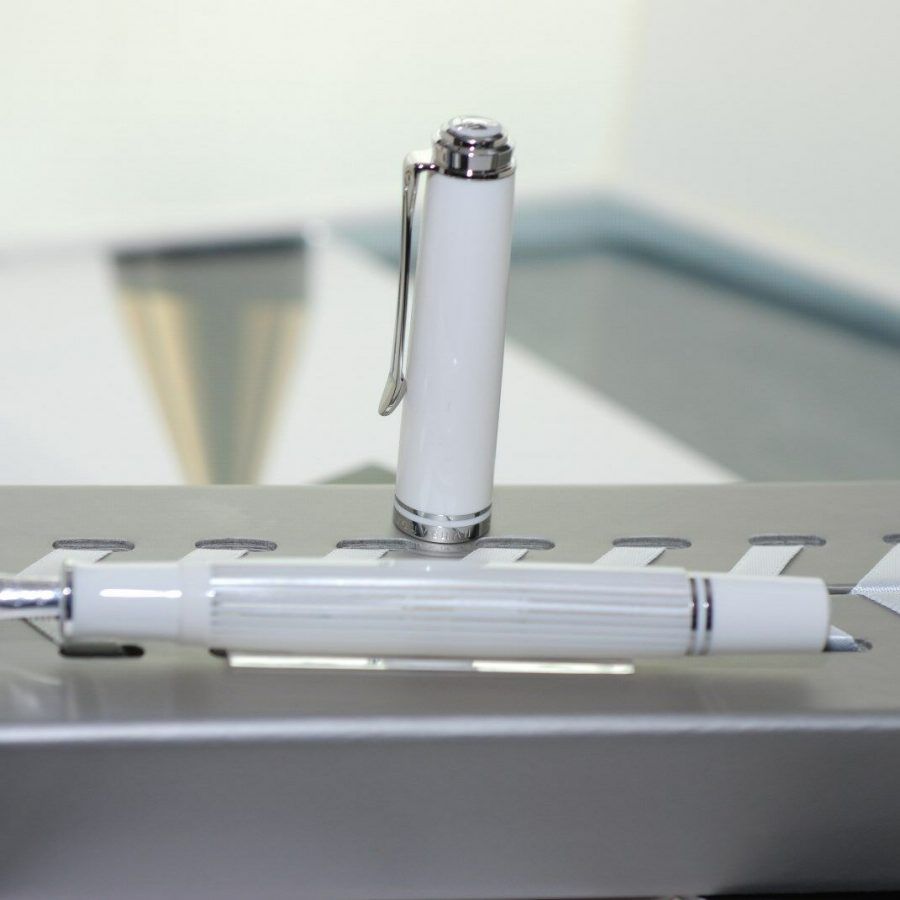 This product has multiple variants. The options may be chosen on the product page
This product has multiple variants. The options may be chosen on the product pagePelikan Souveran 605 White-Transparent Special Edition Fountain pen
410,00€The Souverän 605 White-Transparent is encased in a specially designed gift box. This elegant series will be available as piston fountain pen and a ballpoint pen by mid of October 2017.


 Español
Español 